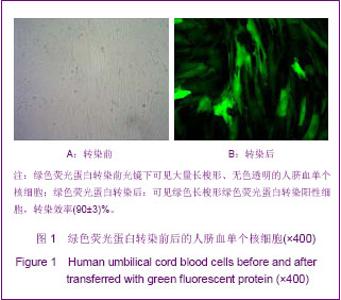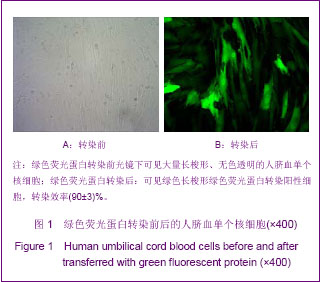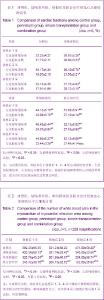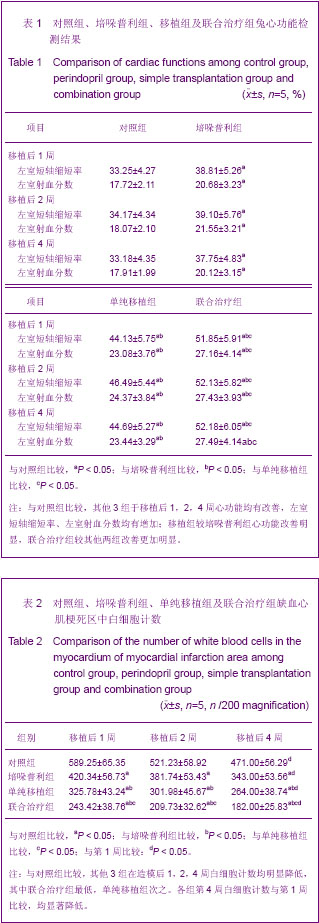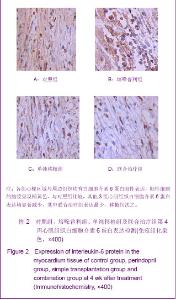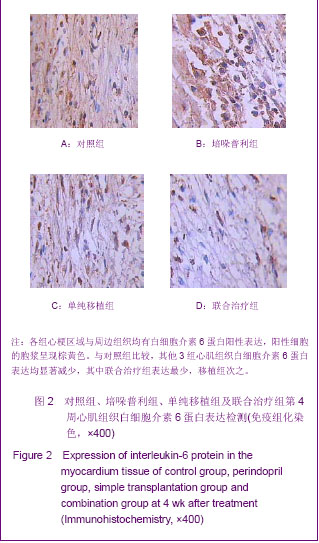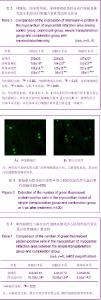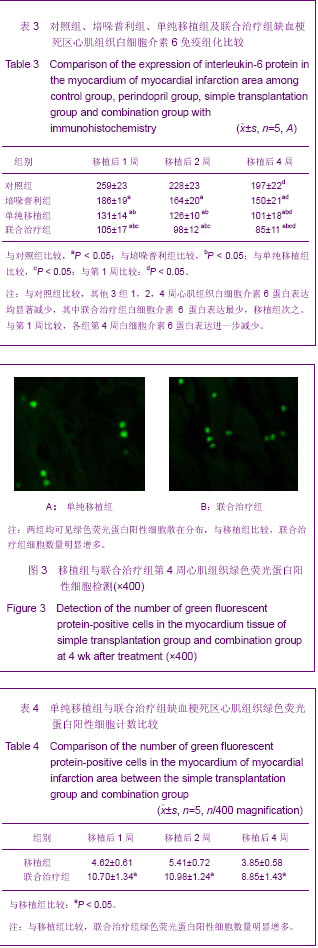| [1] Dai W, Kloner RA. Bone marrow-derived cell transplantation therapy for myocardial infarction: lessons learned and future questions. Am J Transplant. 2011;11(11):2297-2301. [2] Strauer BE, Steinhoff G. 10 years of intracoronary and intramyocardial bone marrow stem cell therapy of the heart: from the methodological origin to clinical practice. J Am Coll Cardiol. 2011;58(11):1095-1104. [3] Beitnes JO, Lunde K, Brinchmann JE,et al. Stem cells for cardiac repair in acute myocardial infarction. Expert Rev Cardiovasc Ther. 2011;9(8):1015-25. [4] Yu G, Borlongan CV, Stahl CE, et al. Transplantation of human umbilical cord blood cells for the repair of myocardial infarction Med Sci Monit. 2008;14(10):163-172. [5] Tongers J, Losordo DW, Landmesser U. Stem and progenitor cell-based therapy in ischaemic heart disease: promise, uncertainties, and challenges. Eur Heart J. 2011;32(10): 1197-206. [6] Luo RH, Wang JA. Zhejiang Daxue. 2007:1-70.骆荣华,王建安.骨髓间充质干细胞移植联合培哚普利对大鼠急性心梗后心室重塑的影响[D].浙江大学博士学位论文.2007: 1-70.[7] Zhou B, Yu GL, Pan W, et al. Zhongguo Zuzhi Gongcheng Yanjiu yu Linchuang Kangfu. 2009;13(40):7996-7998.周波,余国龙,潘玮,等.人脐血单个核细胞静脉移植心肌梗死模型兔心肌组织肿瘤坏死因子α的表达[J].中国组织工程研究与临床康复,2009,13(40):7996-7998. [8] Shi RZ, Li QP. Improving outcome of transplanted mesenchymal stem cells for ischemic heart disease. Biochem Biophys Res Commun. 2008;376(2):247-250.[9] Wu JX, Li J, Zhang NN, et al. Stem cell-based therapies in ischemic heart diseases: a focus on aspects of microcirculation and inflammation. Basic Res Cardiol. 2010; 106(3):317-324. [10] Mouquet F, Lemesle G, Delhaye C, et al. The presence of apoptotic bone marrow cells impairs the efficacy of cardiac cell therapy. Cell Transplant. 2011;20(7):1087-1097. [11] Joggerst SJ, Hatzopoulos AK. Stem cell therapy for cardiac repair: benefits and barriers. Expert Rev Mol Med. 2009; 8(11):20-28.[12] Pinho-Ribeiro V, Maia AC, Werneck-de-Castro JP, et al. Human umbilical cord blood cells in infarcted rats. Braz J Med Biol Res. 2010;43(3):290-296. [13] Hale SL, Dai W, Dow JS, et al. senchymal stem cell administration at coronary artery reperfusion in the rat by two delivery routes: a quantitative assessment. Life Sci. 2008;83 (13-14):511-555.[14] Onodera H, Matsunaga T, Tamura Y, et al. Enalapril suppresses ventricular remodeling more effectively than losartan in patients with acute myocardial infarction. Am Heart J. 2005;150(4):689-694. [15] Uehara K, Nomura M, Ozaki Y, et al. High-sensitivity C-reactive protein and left ventricular remodeling in patients with acute myocardial infarction. Heart Vessels. 2003;18(2): 67-74. [16] Preobrazhenski? DV, Sidorenko BA, Batyraliev TA, et al. Interaction of angiotensin converting enzyme inhibitors with nonsteroidal antiinflammatory drugs. Kardiologiia. 2002;42(7): 68-75. [17] Qing LQ, Yu GL, Zhou B, et al. Zhongguo Xiandai Yixue Zazhi. 2011;23(23):2820-2825.卿丽琼,余国龙,周波,等.人脐血干细胞静脉移植对急性心肌梗死胶原重构及组织基质金属蛋白酶9表达的影响[J].中国现代医学杂志,2011,23(23):2820-2825.[18] Pan W, Zhou B, Yu GL, et al. Jichun yu Linchuang Yixue Zazhi. 2010;30(12):1313-1317.潘玮,周波,余国龙,等. 静脉移植人脐血细胞促进家兔急性心肌梗死血管再生[J].基础与临床医学杂志,2010,30(12):1313- 1317.[19] Yuan CJ, Yu GL, Li WB. Zhonghua Qiguan Yizhi Zazhi. 2011; 32(07):162-165.袁春菊,余国龙,李文斌. 多次静脉移植人脐血单个核细胞对家兔急性心肌梗死炎症反应影响[J].中华器官移植杂志,2011, 32(07):162-165.[20] Hu CH, Wu GF, Wang XQ, et al. splanted human umbilical cord blood mononuclear cells improve left ventricular function through angiogenesis in myocardial infarction. Chin Med J (Engl). 2006;119(18):1499-1506.[21] Beitnes JO, Lunde K, Brinchmann JE,et al.Stem cells for cardiac repair in acute myocardial infarction. Expert Rev Cardiovasc Ther. 2011;9(8):1015-1025. |
